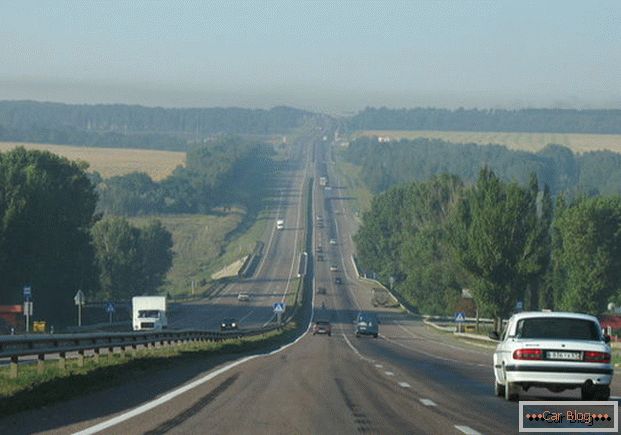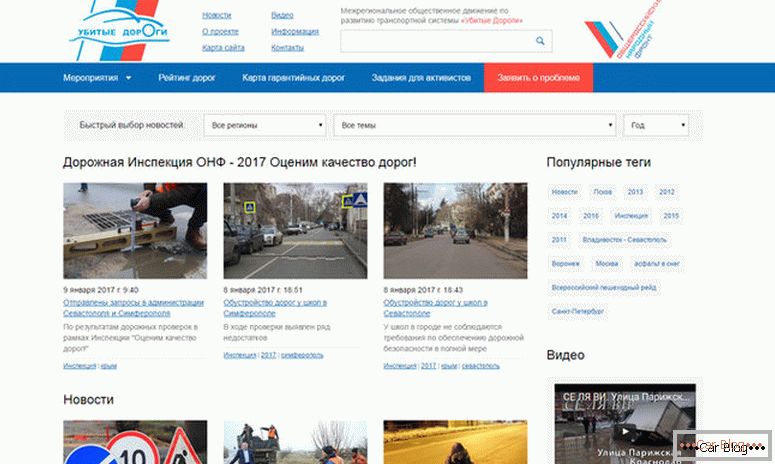A significant increase in the number of vehicles in modern cities is forcing traffic inspectors to apply the most stringent measures to adjust traffic. One of the ways is the active introduction of prohibition signs, which include a sign that prohibits stopping.
This adjustment item is more stringent than the parking ban informant. The severity lies in the fact that the road rules do not provide for the possibility for an ordinary driver, even for a short period of parking in the established area of coverage.
Content
- 1 Legislation
- 2 Spread of coverage
- 3 Prohibited areas for parking and stopping
- 4 Punishment for traffic violations
Legislation
Regulation of traffic regulations in the field of installation of signs is governed by the standard GOST R 52289-2004, as well as the governmental decree No. 1090 of October 23, 1993 that is still in force. In the current numbering of traffic regulations, the visual image of the installation ban is assigned the number 3.27.
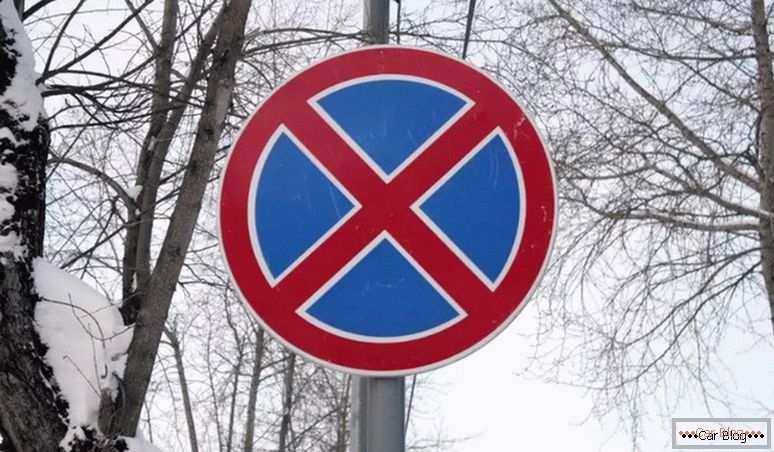 Road signs prohibiting a stop are circular with a blue background. The perimeter border is marked with a red line, and inside are red crossed out crosswise across the diameter of the line. The presence of this construction on the sidelines prohibits parking in front of the pointer and behind it for the duration of its operation. This design has been standardized since the 70s of the last century. The visual image allows a car owner to notice a bright spot from afar and have time to restructure for maneuver.
Road signs prohibiting a stop are circular with a blue background. The perimeter border is marked with a red line, and inside are red crossed out crosswise across the diameter of the line. The presence of this construction on the sidelines prohibits parking in front of the pointer and behind it for the duration of its operation. This design has been standardized since the 70s of the last century. The visual image allows a car owner to notice a bright spot from afar and have time to restructure for maneuver.
On many photos of the “Stop prohibited” sign, there are additional information blocks. They are located below the main circle and decipher in detail some of the features:
- the coverage area of the main informant (arrows or symbols are used in meters);
- permissible time of action (indicated the beginning and end of the time interval);
- permissible and prohibited periods (working days or weekends);
- the end of the restricted area (using the arrow pointing down).
The main reason for the installation of such symbols is to reduce the accident rate on the current track. However, many motorists are interested in the question of whether it is possible to stop under the sign "Stop is prohibited." After all, there are unforeseen circumstances that imply extraordinary decision measures. Rules of the road allowed this maneuver, but it is assumed that it is possible in case of emergency. Exceptions are listed in the following clauses:
- bad feeling of the driver;
- emergency vehicle breakdown;
- requirements of the traffic police inspector;
- taxi with meter turned on;
- route vehicles.
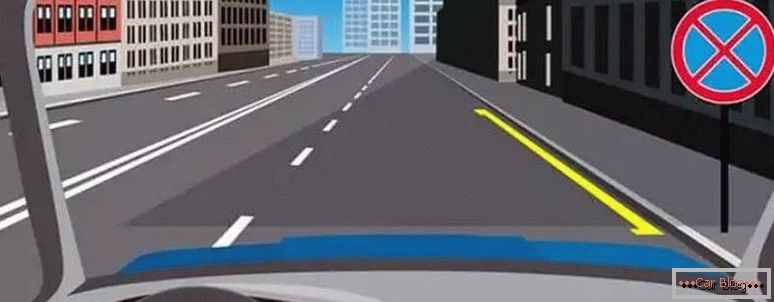
If it is determined whether it is possible to disembark the passenger under the sign “Stop is prohibited”, then according to the current rules it is not allowed. Even if there was a forced stop, it is necessary to set a sign at the appropriate distance and turn on the alarm in the car.
Spread of coverage
According to the current standards established in the legislation, the zone of “Stop prohibited” sign begins from the installation point of the column with this designation. The end of such an interval can be the nearest intersection or a pointer to the end of all restrictions (a round white sign with several thin black stripes drawn at an angle). After passing such a pointer, the car owner can safely park his vehicle if there are no other restrictions on the current traffic rules.
See also: How to challenge the penalty for parking in the wrong placeIf there is a sign with a sign indicating a certain length in meters, for example, 50 m, 100 m or 500 m, the “Stop prohibited” sign ends after the passage of the specified distance. It is enough to measure the forbidden interval and set your vehicle.
Important! Below the prohibition sign, there may be a vertical arrow pointing down. It means the end of the road gap, which can not be parked.
In certain areas, a yellow strip is provided on the right edge of the road. It prolongs the effect of the sign over its entire length.
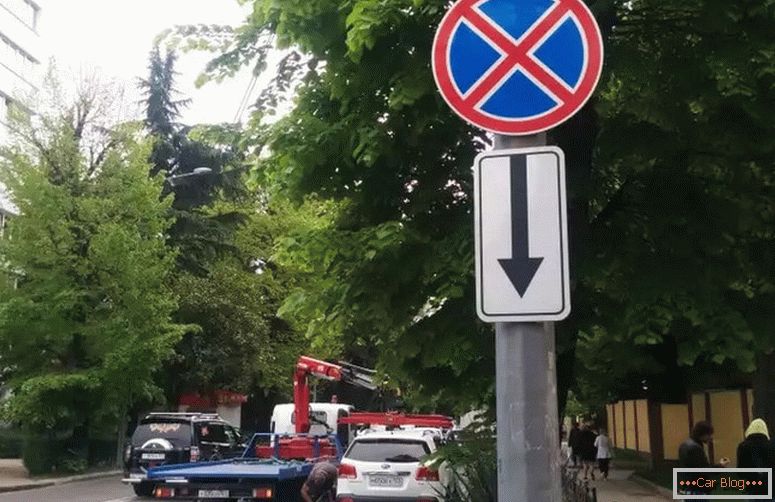
It is not always unequivocally interpreted by drivers that they have a road pocket in a section with a prohibited stop. Some motorists use this road formation for their intended purpose, leaving their car in it. However, the inspector has the right to punish such an action, because the priority according to the rules is a road sign, not a marking. As an exception, the driver can go there for an emergency emergency stop with observance of further actions (switching on the emergency gang and installing the sign).
Prohibited areas for parking and stopping
The legislation establishes and establishes in the Rules of the Road road sections where it is absolutely not allowed to stop. This can not be done not only because of a legal ban, but also because the action can be dangerous to the health and life of the driver and passengers.
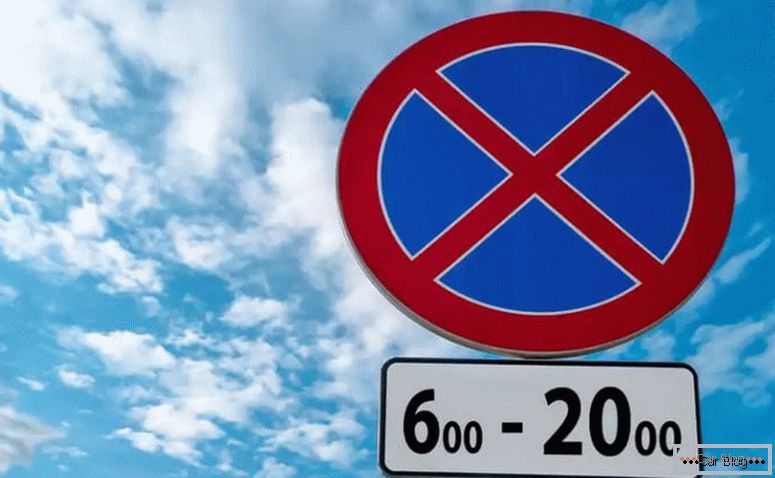
An exhaustive list is specified in paragraph 12.4 of the current traffic rules. These segments include:
- Bridges, overpasses or overpasses, on which there is one or two lanes for movement in the same direction. If there are more than two lanes, the threat of an accident is reduced, as the possibility of safe passage opens up.
- Tram tracks and railway crossings are also not provided for intentional stopping of motor transport.
- It is forbidden to stop in the tunnels, regardless of the number of lanes. Also under the bridges and overpasses, except for specially designated podestokadny areas of parking.
- It is not allowed to park on the road section if after stopping the movement between your car and a continuous marking line or the right edge of the roadway there is a distance of less than 3 m.
- Road intersections. In addition to the intersections themselves, it is prohibited to park the car in a section closer than 5 m to the intersection.
- Marked pedestrian crossings. Stopping at them or parking is punishable by a fine. It is also forbidden to put the car closer than 5 m to them.
- On the section of the road allocated for a stop of route transport. They have a yellow road marking a broken line. The landing area also includes 15 m before the stop and the same distance after it.
- On lanes allocated for public transport and lanes for cyclists.
- It is not allowed to install a vehicle if by its dimensions it will obscure other road users the visibility of road signs or a traffic light.
- It is not allowed to leave the vehicle on the section of the road with limited visibility, less than 100 m when installing cars on the roadway.
- Throwing a car does not follow the rules of the road, when it becomes an obstacle to the exit of another vehicle or turns into an obstacle for pedestrians.
Important! Under the ban on parking falls parking or stopping cars on the roads for cars or highways.
In these cases, you can stop the car only in the designated place on the equipped site. Only an unforeseen stop is allowed on the side of the road or on the asphalted road section.
See also: How many meters to the pedestrian crossing is parking allowed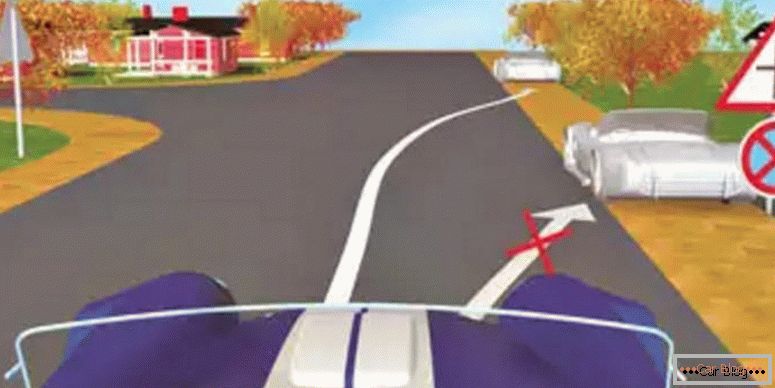
The prohibition of parking, but the possibility of stopping, allows paragraph 12.5. It includes two sub-clauses:
- Parking is prohibited on country roads with active traffic, where there is the designation "Main Road" and there is no possibility of a curb.
- In the interval, located closer than 50 m from the railway crossing on both sides. This will ensure the safe access of other vehicles to the responsible section of the road.
Punishment for traffic violations
Conscientious drivers seek to follow the rules of the road as clearly as possible. However, in some situations, violations of existing regulations occur. Administrative liability in the form of a fine is provided for such acts.
The amount of payment will be 500 rubles for most regions. In cities of federal significance, 2500 rubles will have to be paid. In the case of taking a seat for the disabled, the amount of punishment increases to 3000-5000 rubles. When, by its position, the car creates a hindrance to other vehicles or creates a dangerous situation, the car owner will have to give 2,000 rubles. At a stop in places of federal value, the fine will be 2500-3000 rubles.
The punishment is not imposed in the event that any important units or systems of the car are out of order. But in this case it is necessary to inform the rest of the drivers with the included "emergency gang" and the presence of a sign accordingly.

